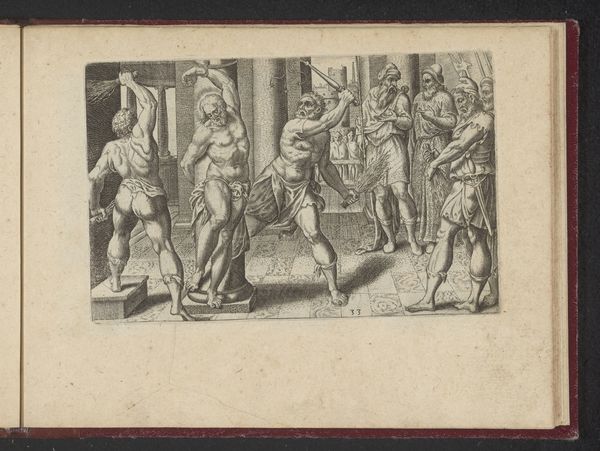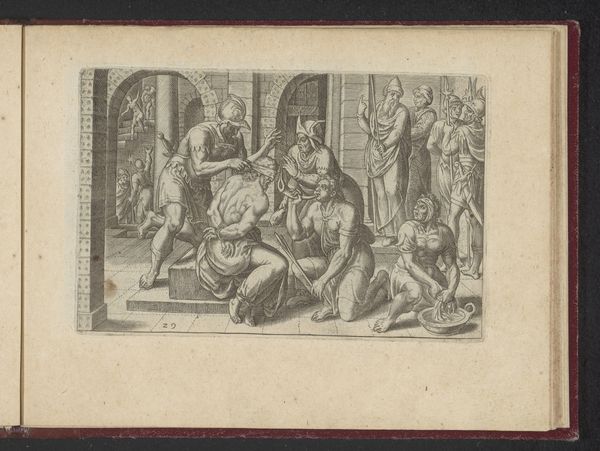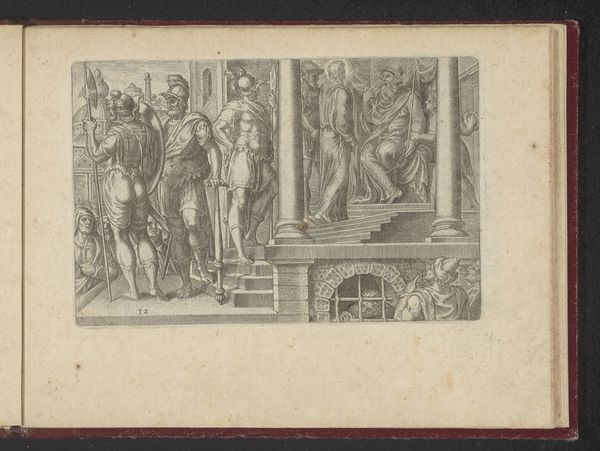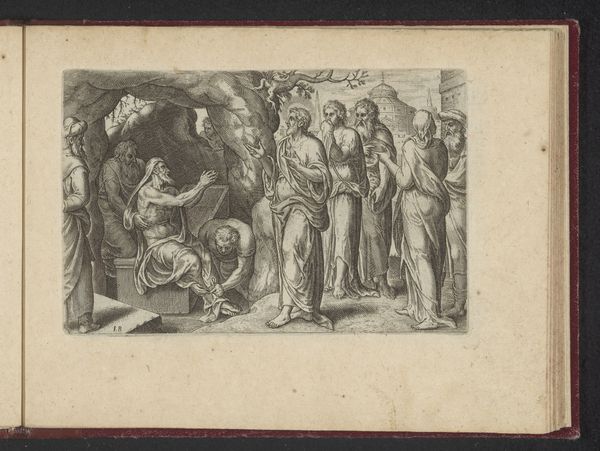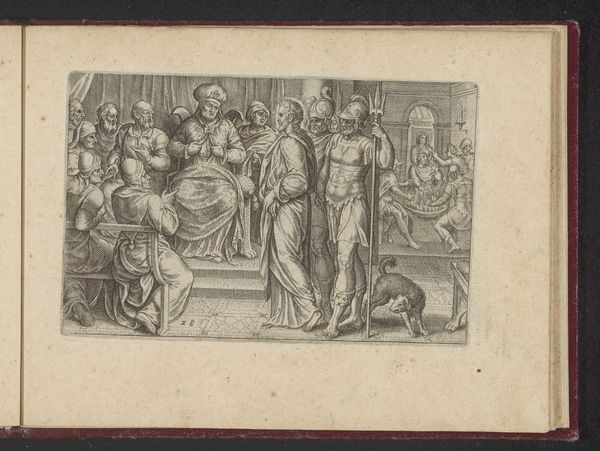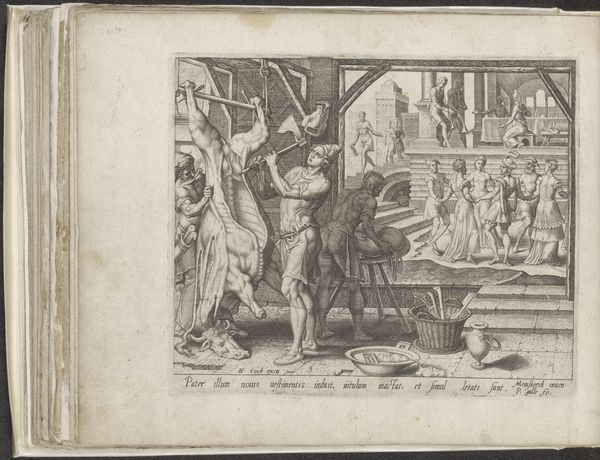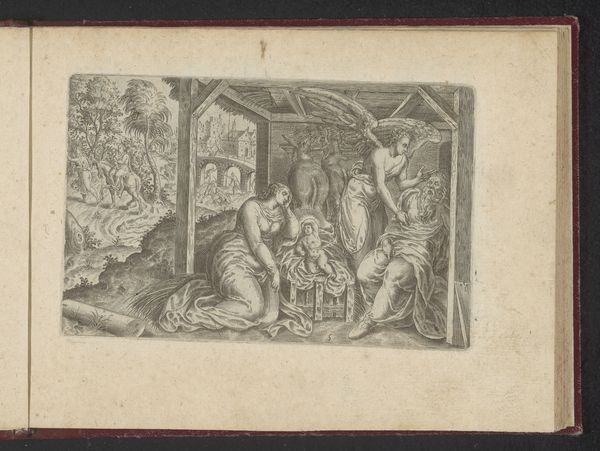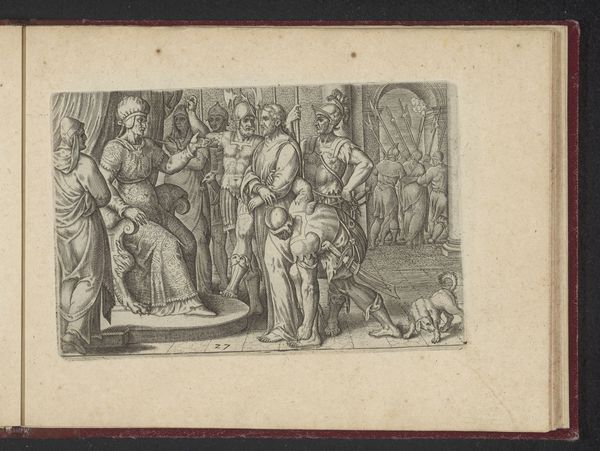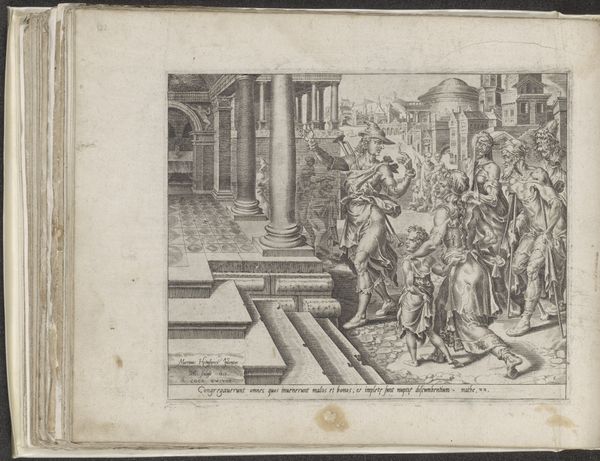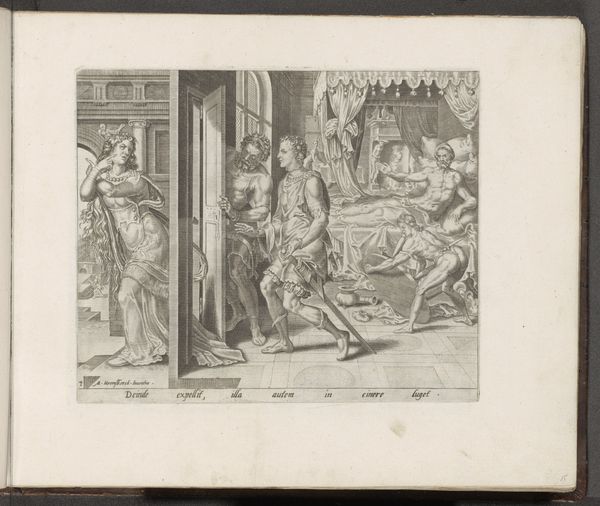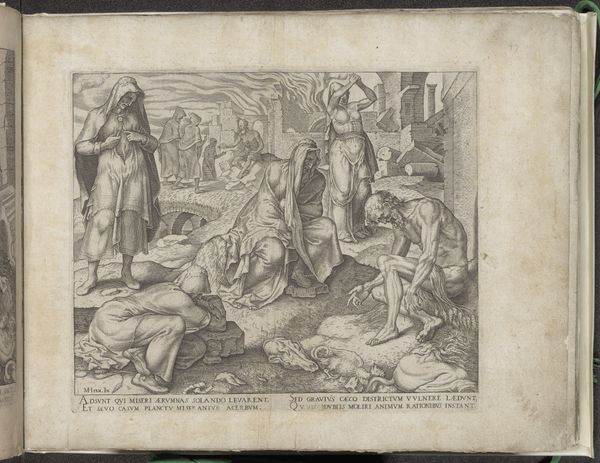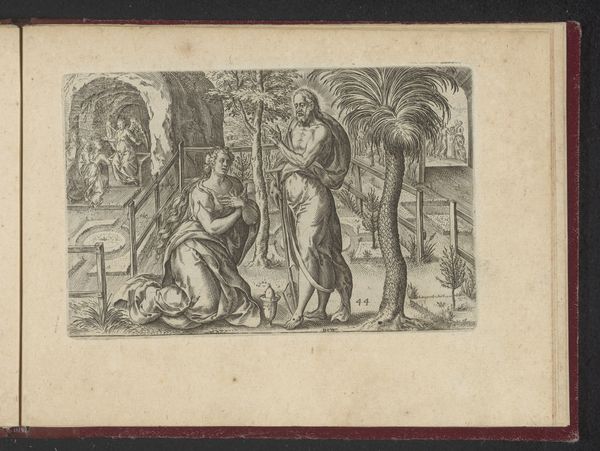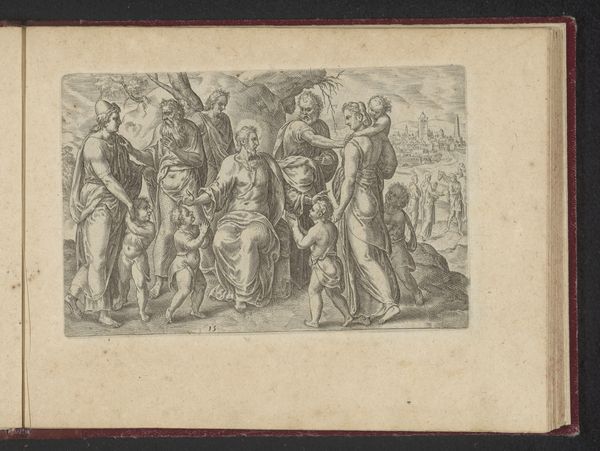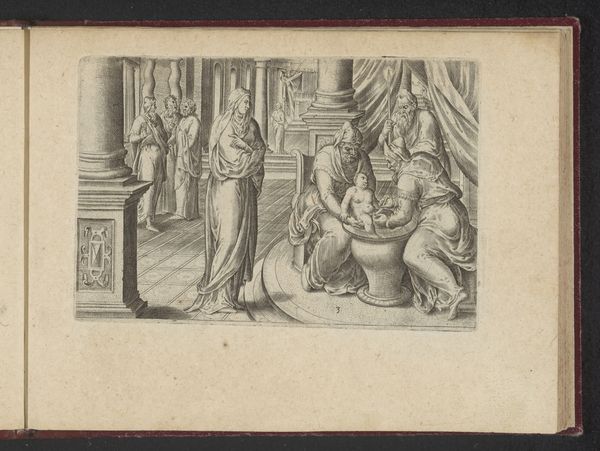
Christus verlaat de hel en bevrijdt patriarchen en profeten en anderen 1573
0:00
0:00
wierix
Rijksmuseum
drawing, print, ink, engraving
#
drawing
#
aged paper
#
toned paper
#
narrative-art
#
pen drawing
# print
#
sketch book
#
mannerism
#
figuration
#
personal sketchbook
#
ink
#
pen-ink sketch
#
ink colored
#
pen work
#
sketchbook drawing
#
history-painting
#
nude
#
sketchbook art
#
engraving
Dimensions: height 92 mm, width 139 mm, height 137 mm, width 183 mm
Copyright: Rijks Museum: Open Domain
Editor: This is "Christus verlaat de hel en bevrijdt patriarchen en profeten en anderen," or "Christ Leaving Hell and Freeing Patriarchs and Prophets and Others," a 1573 engraving by Wierix. It has a rather stark and theatrical quality, and the line work is incredibly intricate. What stands out to you? Curator: What strikes me is the deliberate engagement with materials and the process of reproduction inherent in engraving. Consider the labor involved in meticulously etching the design onto the plate. This isn't simply an image; it's the result of skilled craftsmanship and repetitive actions within a specific economic system. Editor: I hadn’t considered the economic implications. Can you elaborate on the "system"? Curator: Think about the networks needed to distribute this print. How does its status as a multiple, rather than a unique artwork, impact its accessibility and perceived value? Also, how does the choice of engraving – a reproducible medium – influence the artwork’s message, its dissemination among different social strata? This work gains power, and possibly subverts power, through production, use and circulation. Editor: So, you're saying that the material choices and the way it was produced are as important as the subject matter itself? Curator: Absolutely. It shifts our understanding from pure aesthetic appreciation to an analysis of the artwork’s role within a broader socio-economic context. Look at the type of paper that's employed, the inks: How do these components shape its lasting impact? Editor: I see. It adds a whole new layer of complexity. Curator: Exactly! The art object as the end result of complex socio-economic practices. What we choose to reproduce is equally telling as the materials themselves. Editor: This gives me a completely new way to look at engravings and their role in society at the time. Curator: Indeed. Considering the artwork's materiality and means of production helps to understand its historical impact.
Comments
No comments
Be the first to comment and join the conversation on the ultimate creative platform.
